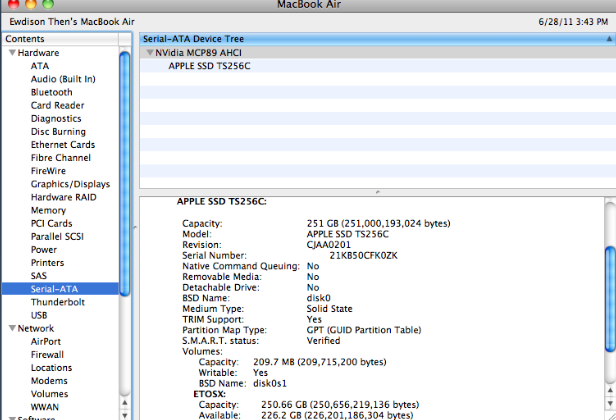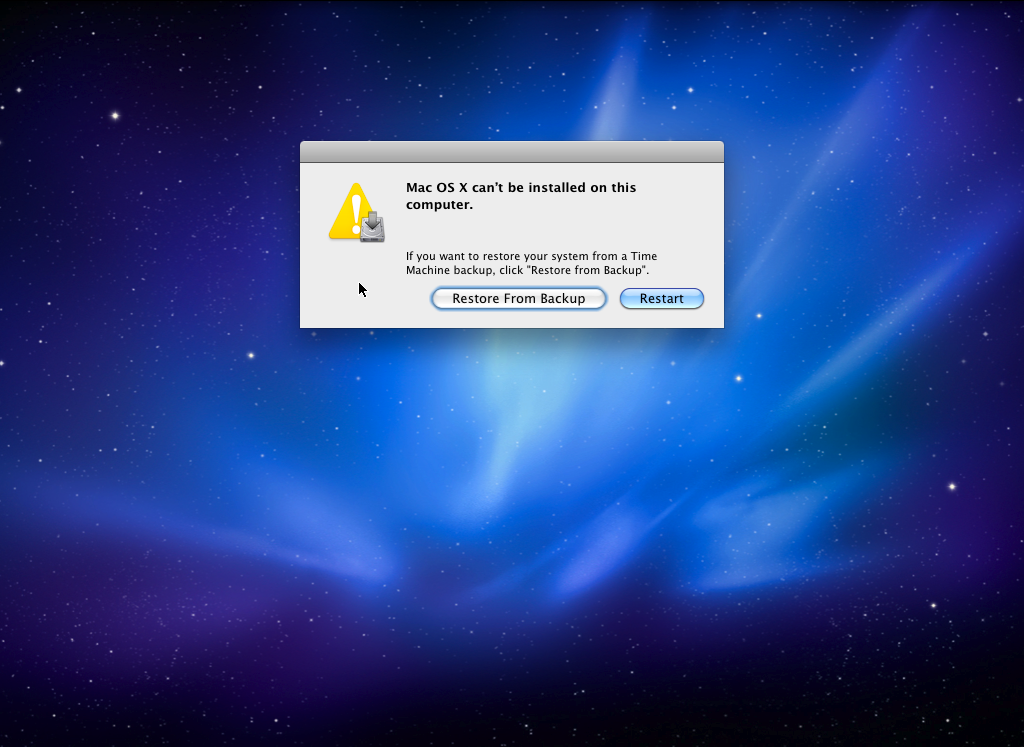
- #Mac os 10.6.8 recovery how to#
- #Mac os 10.6.8 recovery update#
- #Mac os 10.6.8 recovery upgrade#
- #Mac os 10.6.8 recovery full#
- #Mac os 10.6.8 recovery pro#
It should take about 20-30 minutes to repair everything. You should now see a wall of notifications. I needed three attempts to get that working. You may also modify the sequence of the five load commands. If you don't get a new prompt :/ root# after waiting some time, you may just enter the next command. If the loading of doesn't find an end you may just enter launchctl load /System/Library/LaunchDaemons/ or after entering ctrl C continue with launchctl load /System/Library/LaunchDaemons/ Launchctl load /System/Library/LaunchDaemons/

You may try the following in Single User Mode: Terminal in the admin account it still works in the root account).Ĭonsequently I can't reproduce your problem. After deleting (not just disabling rwx!) all wheel group permissions of /bin, /sbin, /private, /System and all subsequent files and folders as well as those of all relevant folders in /Library with either an admin or the root account and afterwards totally removing the group wheel with the workgroup manager, the system still boots properly. I set up a virtual machine with Snow Leopard Server (10.6.8). Press Enter.This not-really-an-answer answer probably doesn't solve your problem, though the result is so astounding/interesting not to dump it in the comment section: “password” with a new password of your choice. passwd /Users/username password and replace “username” with one of the users displayed in the previous step. This lists all of the usernames on the computer – helpful if you don’t know or remember what these are.
#Mac os 10.6.8 recovery how to#
If all you need to do is reset the password, then that can be done on older OSes from Single User Mode.įrom MacYourself - How to reset your Mac OS X password without an installer disc
#Mac os 10.6.8 recovery full#
I've never owned a 1,1 or 2,1 to test.Īs it is a Mac Pro, you have the potential of a third option - you can drop in a new drive with either a full system on it, or a bootable installer. I've successfully booted 4,1 & 5,1 Macs from USB. Personally, I have never managed to boot a 2008 3,1 from USB, though others say they have succeeded.
#Mac os 10.6.8 recovery pro#
That in itself may depend on precisely which Mac Pro it is. That means your only way to boot from other than the regular boot drive is to either use the original Snow Leopard disk, or attempt to boot it from a USB key. Internet Recovery came later still, in Macs introduced in 2011. Mac OS X Lion, 10.7 was the first OS to introduce the Recovery Partition. If this doesn't resolve your issue, please look at the other answers to your question. Try to use the link below for any extra information: (Please Note: Creating a new server will not result in a fee.) Once the boot has finished loading, you should be greeted with a screen to either to choose your language of preference and continue with Mac setup or if on a macOS X Server (10.6.8), the ability to create and register a new server. After your Mac shuts down, power on your Mac. If not, proceed to shut it down manually. That last command should automatically shutdown your Mac. Be sure to click the Enter or Return key after each command. After that, enter the commands listed below one by one. Slimmer QuickTime Player: QuickTime X features a simplified GUI with a greater focus on codec support.

This version of Apple's OS also has a reduced footprint.
#Mac os 10.6.8 recovery update#
This update does not have stacks of new features, rather overall improvements and efficiency upgrades.
#Mac os 10.6.8 recovery upgrade#
Wait until you think the commands are fully done appearing. Mac OS X 10.6.8 Snow Leopard is an upgrade to the previous version of OS X Leopard. A large number of lines of code will automatically appear on your slowly, do not do anything while this happens. Hold the two keys down together until a black screen appears.

Be sure to do this before the Apple Logo appears. When the start-up chime rings and the white screen appears, hold the Command ⌘ + S keys. However, these issues do not occur often. You may also see some effects such as loss of data or damaged OS.

Please also note that this method is not encouraged by Apple, but usually works. If you cannot boot into recovery mode or internet mode, this issue may be hard to tackle.īefore we start, please be sure to back up any files on your Mac.


 0 kommentar(er)
0 kommentar(er)
